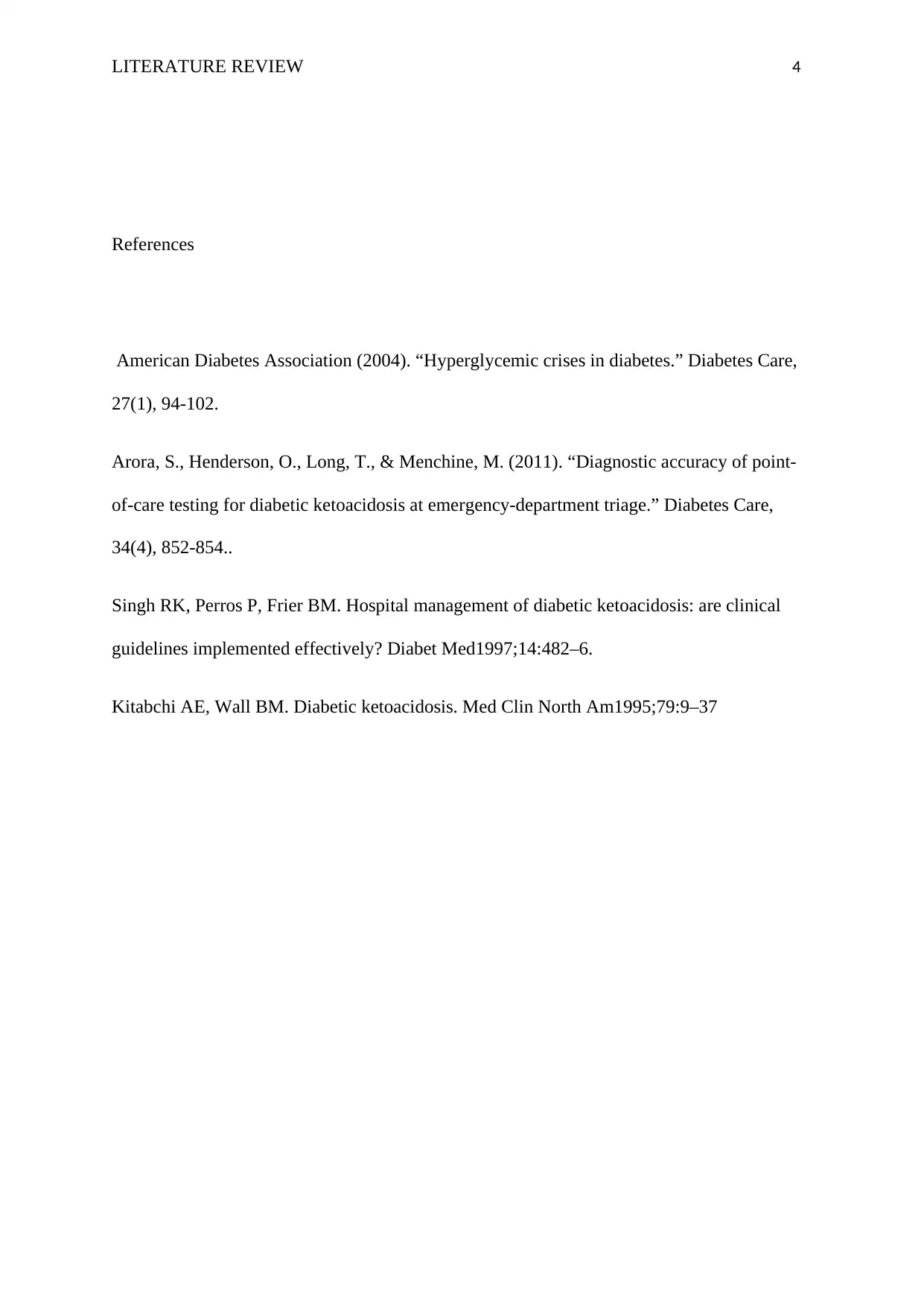University Name: Literature Review of Diabetic Ketoacidosis Treatment
VerifiedAdded on 2019/09/25
|4
|700
|62
Literature Review
AI Summary
This literature review examines the treatment protocols for Diabetic Ketoacidosis (DKA), a life-threatening condition primarily affecting individuals with diabetes. The review analyzes two articles that discuss DKA treatment, focusing on the significance of insulin deficiency and high blood sugar levels. The key aspects of DKA treatment include fluid resuscitation, electrolyte management, and insulin administration. The review highlights varying approaches to fluid replacement and the use of insulin drips, with a focus on the importance of monitoring glucose levels and potassium supplementation. The role of patient education in managing insulin levels is also emphasized. The review concludes with a discussion on the improved prognosis and reduced mortality rates associated with current treatment approaches, with a focus on the use of continuous subcutaneous insulin and the absence of major differences in insulin administration techniques. The provided references support the evidence-based treatment guidelines for DKA.
1 out of 4











![[object Object]](/_next/static/media/star-bottom.7253800d.svg)